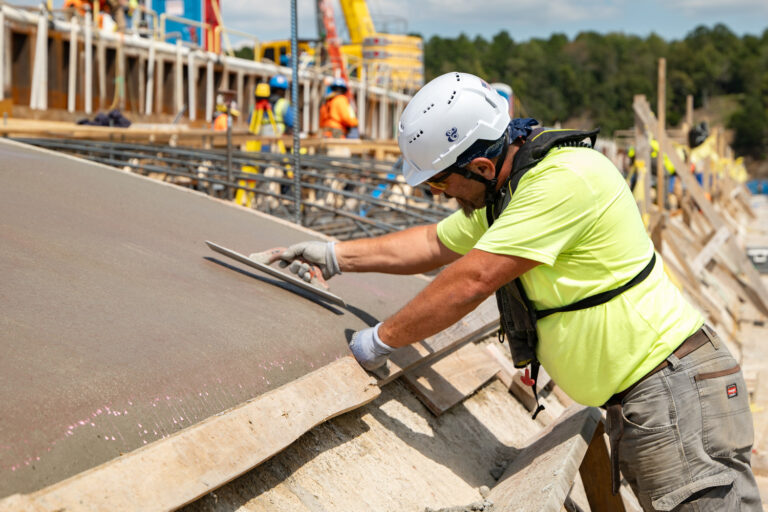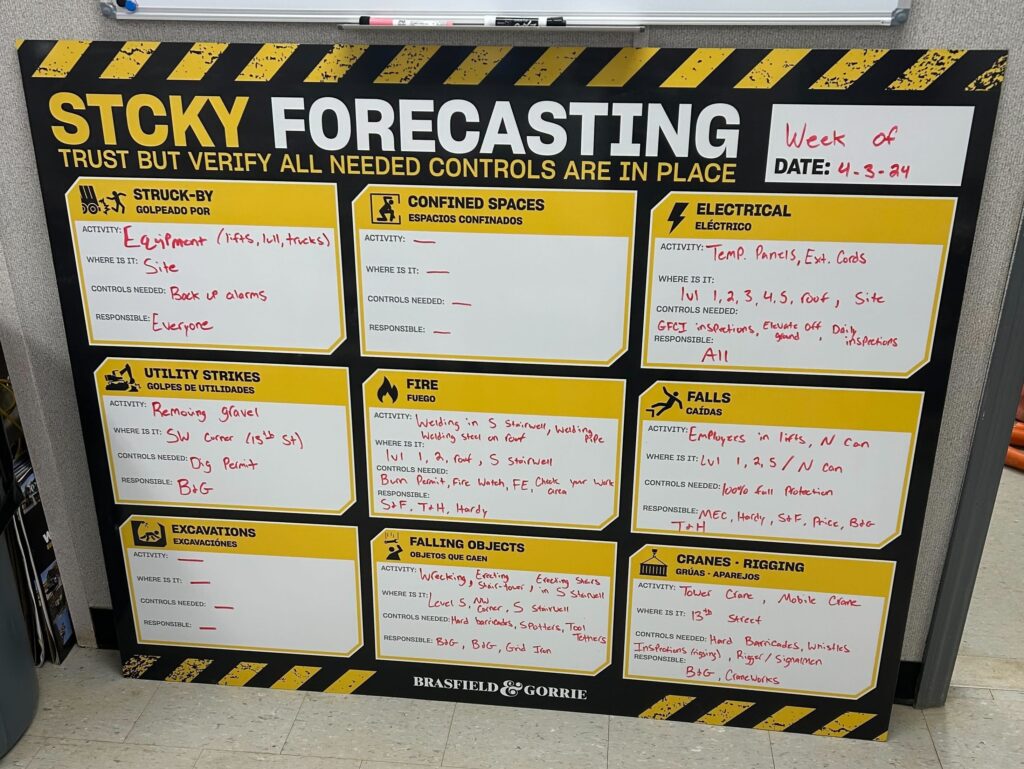Hope is not a strategy
January 10, 2024

Our safety philosophy boils down to one simple principle: People come first, no exceptions.
We like to be good, not just lucky. What does it mean for us to be lucky vs. good? Lucky is when we have a Stuff That Can Kill You (STCKY) incident and controls were missing that could have prevented or limited risk—but no one was seriously hurt. Good is when we installed controls to protect our workers from that same risk. To be good, we must know about the STCKY activities on our projects and verify we are installing, inspecting, and maintaining controls.
“We will not compromise safety for schedule, cost, or production.”
Miller Gorrie
Chairman and Founder
We want to consistently improve safety practices, and we’ve realized the way we’ve measured things in the past may not work best. We’ve developed a dashboard that will help measure how often we’re good vs. lucky, which allows us to focus on STCKY activities that need new or additional controls. This includes anti-collision devices on cranes, Type 2 hard hats, and updates to our Lock Out Tag Out and burn permit.
Want to know more about STCKY?
Traditional injury metrics such as Recordable Incident Rate (RIR) and Lost-Time Incident Rate (LTIR) are routinely used to measure safety performance. The lower the RIR and LTIR, the safer the company is perceived to be. Brasfield & Gorrie has benefited from that as our RIR and LTIR are among the industry leaders. We are encouraged by our improvement in those categories and want to continue it. But these metrics do not account for potential severity, and therefore, discount events that could have been life-altering. As we learn more about serious injury and fatality research, we begin to understand that this radical focus on lower injury rates has done very little to lower fatalities. Construction fatality rates have remained relatively flat over the last three decades, while recordable rates have hit historic lows.
The research suggests the following:
• The things that cause minor injuries are rarely the same things that cause serious or fatal injuries.
• Minor injury trends have very little correlation to help us predict future serious events.
Therefore, we want to always be mindful of STCKY. The leading causes of construction deaths have long been falls, electrocutions, and situations where workers are struck by or caught between objects. Anything with the potential to create significant energy has the potential to cause harm. Control of that energy prevents it from causing harm, and control comes in many different forms.
